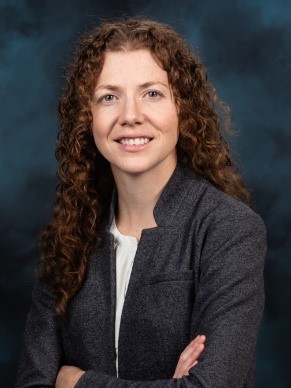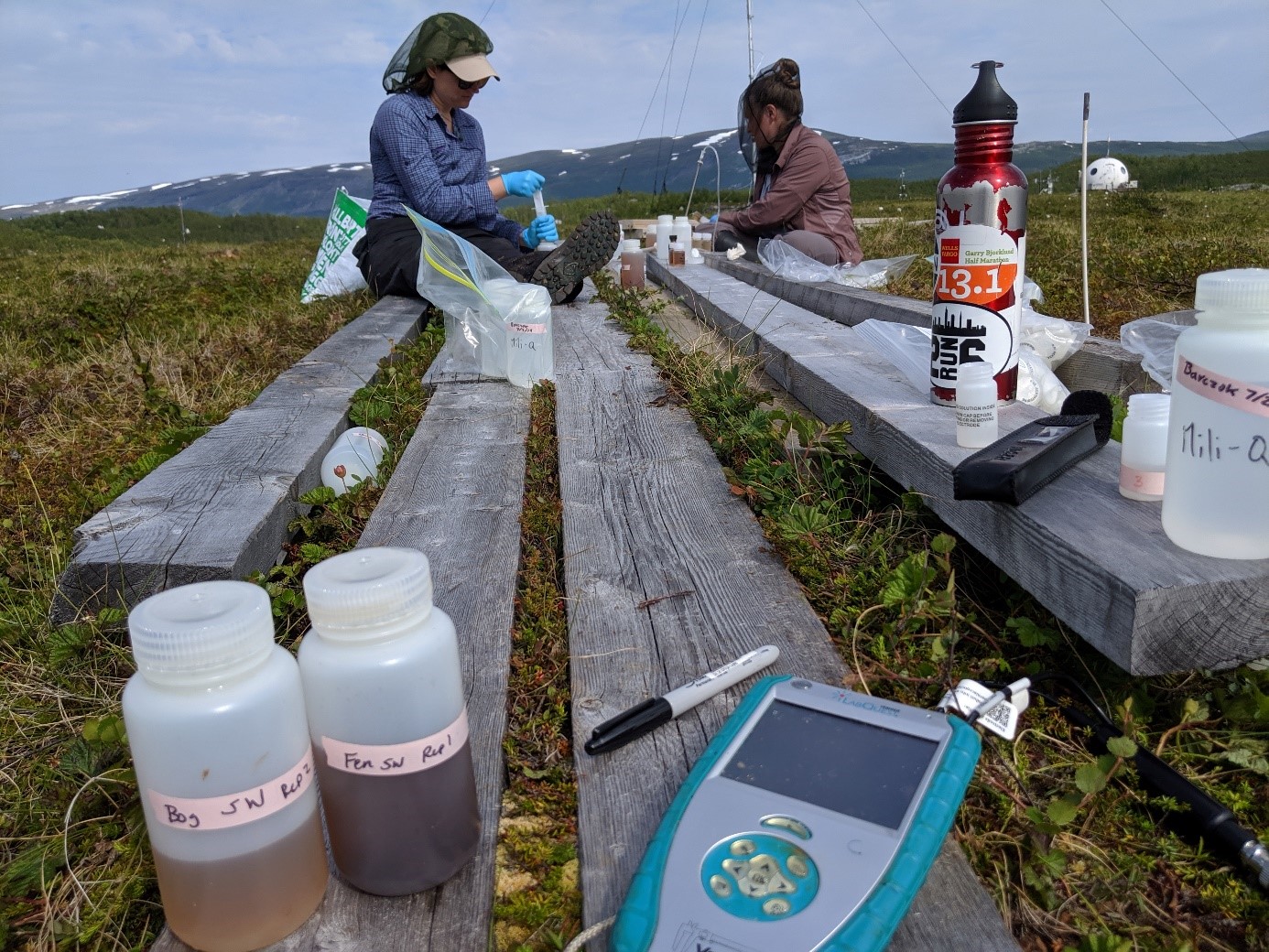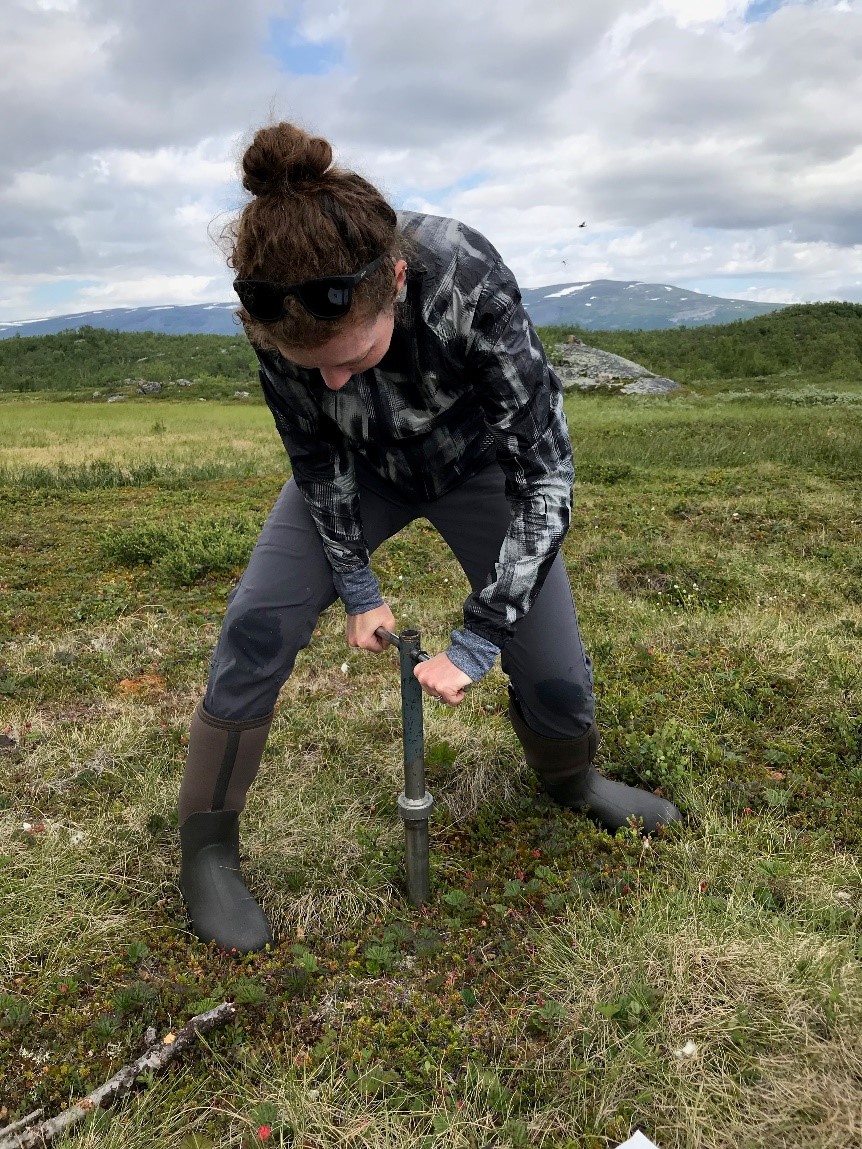Dr. Elizabeth M. Herndon is one of the authors of "Iron Transformation Mediates Phosphate Retention Across a Permafrost Thaw Gradient," published last year in Communications Earth & Environment. As part of the study, researchers conducted sample at Abisko Scientific Research Station. Here, Dr. Herndon shares insights with the SITES Community about the project and her experience sampling at a SITES station.
 Why is it important to understand how iron oxides regulate phosphate availability in thawing permafrost?
Why is it important to understand how iron oxides regulate phosphate availability in thawing permafrost?
Phosphate is a critical and often limiting nutrient for plants and soil microorganisms. Phosphate limitation might constrain plant growth and the ability of vegetation to capture carbon dioxide from atmospheric. Iron oxides are soil minerals that strongly bind phosphate and can limit its bioavailability to plants but have been largely overlooked as important components of organic-rich permafrost systems until recently. Permafrost thawing leads to changes in the water table that affect where and to what extent these iron oxides form.
What are the main findings of your project?
We determined that soils contain iron oxides that bind phosphate, but that these iron oxides largely dissolve when permafrost thaws and the overlying soil collapses and floods. Phosphate is released from iron oxides as they dissolve, which may increase phosphate bioavailability in the short-term. However, the loss of iron oxides may also reduce the capacity for soils to store phosphate over the long-term.
How can the results be applied in society and be utilized by different stakeholders?
These results can be used to better understand and predict how these sensitive ecosystems will evolve as permafrost thaw continues under a warming climate. Additionally, this information may provide context for how iron and phosphate are transported out of soils and into aquatic systems where they may affect water quality.
Has a collaboration with other researchers, research groups, stakeholders and companies taken place?
Our team consisted of two Kent State University PhD students, Max Barczok and Chelsea Smith, who led the work at Stordalen Mire under the supervision of myself and co-PI Lauren Kinsman-Costello. We conducted this study in collaboration with Monique Patzner, Casey Bryce, and Andreas Kappler from the University of Tubingen and benefited from their knowledge of the system.
What has been done at SITES Abisko Scientific Research Station?
Our project was completed across a permafrost thaw gradient in Stordalen Mire, where the thaw has been expanding and resulting in the collapse of palsa ground into bogs and fens. We adsorbed phosphate onto iron-rich sediments and then buried them in mesh bags in the ground to see how they transformed over the course of 11 weeks. We also analyzed the chemical properties of soil and soil water and used environmental sensors to monitor how the water table and redox conditions varied during the incubations.
What worked best and what were the challenges with the work you carried out in Abisko?
The boardwalks were an essential resource for us during our field work. The tundra is so sensitive that any consistent work in one location can tear up the ground, and the boardwalks helped to mitigate the damage and also traverse the mire safely.
What support have you gotten from SITES station's staff?
The station staff were incredibly helpful in getting us set up to do field work and also in providing space and resources for us in the laboratory. Since we needed to complete our soil analyses on site, the access to laboratory space and equipment was important for our success. The staff also found a critical sample of ours that had gone missing after being tucked away in the back of a freezer and were able to ship it to us.
What is the added value in performing data collection at SITES stations?
By performing work at Abisko Scientific Research Station, we benefited from decades of research on the system that informed our understanding of site properties and hydrology. Additionally, we were able to leverage meteorological data from the site during our period of study to provide context for our in-situ measurements.
Have you used data from the station's long-term data series?
We used the long-term meteorological data series to evaluate rainfall during our study and place it in context of previous years.

Lauren Kinsman-Costello and Chelsea Smith, two co-authors of the study, filter soil water collected from Stordalen Mire (photo: Elizabeth Herndon)

Dr. Elizabeth Herndon sampling a soil core using an auger (photo: Elizabeth Herndon)